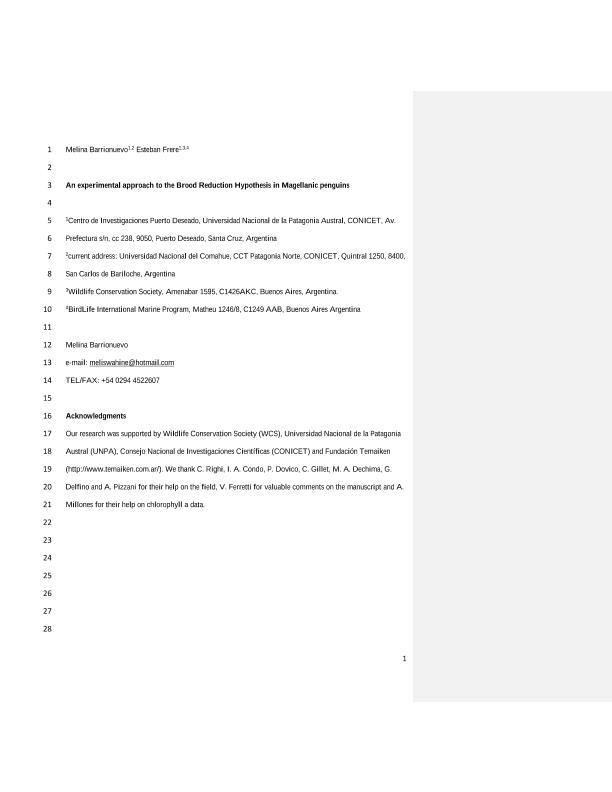Artículo
An experimental approach to the brood reduction hypothesis in Magellanic penguins
Fecha de publicación:
07/08/2017
Editorial:
Wiley Blackwell Publishing, Inc
Revista:
Journal Of Avian Biology
ISSN:
0908-8857
Idioma:
Inglés
Tipo de recurso:
Artículo publicado
Clasificación temática:
Resumen
In many bird species, eggs in a brood hatch within days of each other, leading to a size asymmetry detrimental to younger siblings. Hatching asynchrony is often thought of as an adaptive strategy, and the most widely studied hypothesis in relation to this is the ‘brood reduction hypothesis’. This hypothesis states that when food resources are unpredictable, hatching asynchrony will allow the adjustment of the brood size maximizing fledging success and benefitting parents. The Magellanic penguin Spheniscus magellanicus is an appropriate species to test this hypothesis because it has a 2-egg clutch that hatches over a 2-d interval with a broad range of variation (–1 to 4 d), it shows facultative brood reduction, and food abundance between breeding seasons is variable. We performed a manipulative study at Isla Quiroga, Argentina, during three breeding seasons (2010–2012) by forcing broods to hatch synchronously (0 d) or asynchronously (2 or 4 d). Years were categorized based on estimated food abundance. Our study provided mixed results because in the low estimated food abundance year asynchronous broods did not have higher nestling survival than synchronous broods, and the second-hatchling in asynchronous broods did not die more often than those in synchronous broods. On the other hand, younger siblings of 4-d asynchronous broods starved earlier than those of synchronous broods, and 2-d asynchronous broods fledged heavier young than synchronous broods. Asynchronous hatching would seem to benefit reproduction in this species, not with respect to survival, but in terms of the advantages it can accord to nestlings and, in terms of lower costs, for parents raising nestlings.
Palabras clave:
Brood Reduction
,
Hatching Asynchrony
,
Magellanic Penguin
,
Nestling Survival
Archivos asociados
Licencia
Identificadores
Colecciones
Articulos(CCT - PATAGONIA NORTE)
Articulos de CTRO.CIENTIFICO TECNOL.CONICET - PATAGONIA NORTE
Articulos de CTRO.CIENTIFICO TECNOL.CONICET - PATAGONIA NORTE
Citación
Barrionuevo, Melina; Frere, Esteban; An experimental approach to the brood reduction hypothesis in Magellanic penguins; Wiley Blackwell Publishing, Inc; Journal Of Avian Biology; 48; 8; 7-8-2017; 1077-1086
Compartir
Altmétricas




